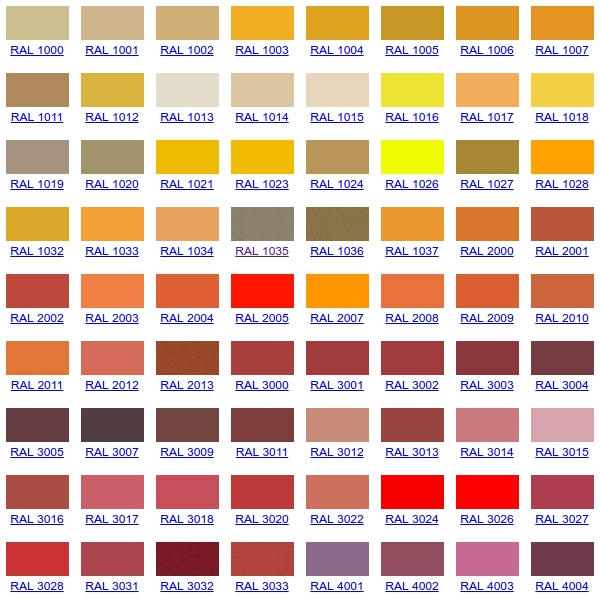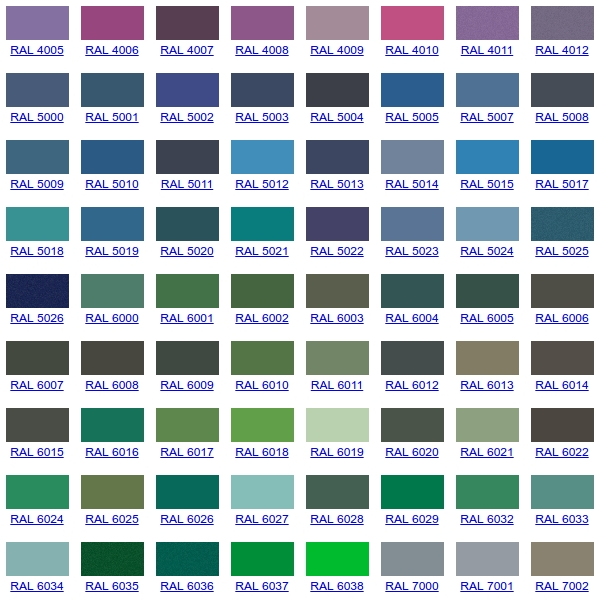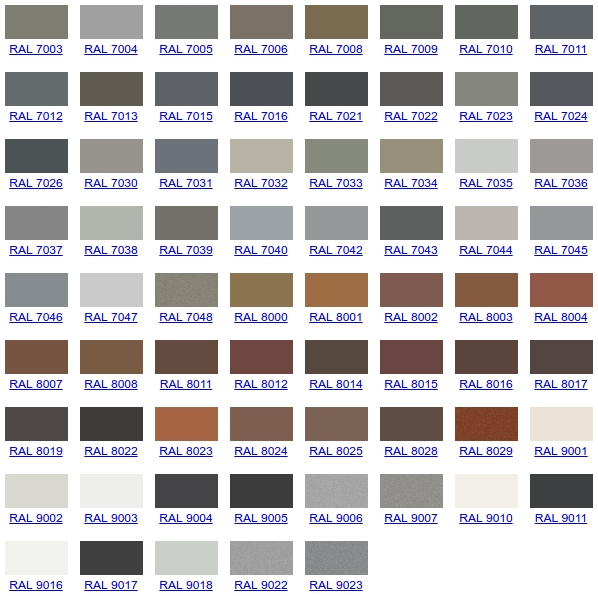| Main | Profile systems | Coating | Program TALSOFT | Buy online | Objects | News | Contacts |
The polymericColoring process
 .jpg)
Yellow chromatizing. The painted surface should be protected from corrosion as the unprotected surface quickly is oxidized. Protection is reached by means of chemical processing (yellow chromatizing). During such processing the amorphous covering with specific weight 0,1-1,0ú/m ² turns out yellow color. This covering, also as well as solution for its implementation, contains hexavalent chrome. Thanks to excellent corrosion resistance, chromatizing can serve as a final sheeting of construction from aluminum, however its basic purpose is preparation a surface for coloring. It is recommended as a substrate under powder coverings by GUALICOAT system. This process is widely applied around the world.
Drawing a polymeric covering. The polymeric covering created on the basis of powder paint — is new environmentally friendly, waste-free technology. It is considered one of the most perfect today. Briefly the technology can be described so: powder paint is sprayed on a product surface with application of an electrostatic field, then at high temperature maintained in special cameras. The last decade technologies of powder coloring even more often force out traditional ways. With its use paint about 15 percent of all products in the world today. And the number it constantly increases. In what difference of powder paints from the usual liquid? The main advantage of polymeric coverings — their durability, durability and protective functions. Thanks to new technology on the painted surface the layer of elastic plastic with very high resistance is formed. Office and house metal furniture, the trade equipment, a sports equipment — is some examples where polymeric coverings well proved.
Industrial coloring by usual liquid paints means control of viscosity and its operational development up to the necessary size. Use of powder paints excludes these difficult operations that eventually provides economy and big stability of quality of painting. An exception of potek on vertical surfaces and wrinklings of coverings when drying.
Possibility of receiving thick single-layer coverings (at the expense of the 100% content of solid) instead of more expensive multilayered in case of liquid paints. Shrinkage and porosity of a film thanks to lack of evaporation of solvents is less.
In comparison with usual, solventborne paints and varnishes, polymeric coverings are chemically steady. To them solvents, alkalis, acids, gasoline, lubricant oils and other structures aren't terrible. They also possess the increased anticorrosive properties.
The polymeric covering is harmless. The new technology of coloring relieves of environmental problems — flammable and toxic liquid solvents aren't used. It is enough to remember that powder paints painted gas stoves and refrigerators at each of us of the house.
One more powerful advantage of powder paints — almost boundless color palette, and also shades and invoices. The surface gains properties which at application of traditional technologies or are unattainable, or cost is several times higher than them. For example, golden, silvery and aluminum metallics, fluorescent paints. There are also unusual shades: for example, a series of antique paints which will stylize a surface under ancient copper, bronze or silver subjects. When coloring shades are controlled on gloss degree, forming glossy, opaque and semi-gloss surfaces. The variety of flowers is supplemented by special effects — "under moire", "facets" also others.
Scope of powder paints the quite wide. Polymeric coverings approach for: - Elements of the facade: windows profiles, roof, metal tile, metal doors, fence and gate; - office and garden furniture, trade equipment, racks and counters, machines; - various transport: agricultural cars, bicycles and motorcycles, rims, instrument guards and mirrors, radiators;
- goods for sport and rest, a camping, garden and garden stock. Main stages of process of coloring by powder materials: 1. Choice of color (or several flowers) coverings according to the catalog of RAL colors 2. Preparation of a surface of products for painting: Etching, degreasing, washing, chromatizing 3. Drawing a powder covering on a surface of the aluminum shape: it is made on the automated lines in the special painting camera. This process happens thanks to technology, which directs the paint particles loaded in an electrostatic field on a surface of the grounded product that allows to achieve uniformity of distribution and thickness of paint on a surface of products. 4. Formation of a covering on a product: For fixing of a layer of powder paint the profile goes to the polymerization furnace where as a result of temperature heating there is a process of a curing fixing of powder paint on a profile surface 5. Quality control 6. Packing (if necessary) in a stretch a film.
The surfaces having a difficult form are usually very difficult in painting. For the Polimer-color firm using powder paints of the Finnish TEKNOS concern, it not a problem. These paints perfectly lay down in any bends of a product. The dimensions of details processed on lines of chromatizing and a powder dusting: 7000*300*1200mm Coloring is made on the robotized semi-automatic installation of the Compact line of production of OTEFAL Italy firm with use of napylitely firm "WAGNER"
Experts of "Polimer-color" will help you to decide the texture or color of the paint.
|
|
Copyright © 1992-2018 Talisman LTD All rights reserved |
Website development Лаймнет |










